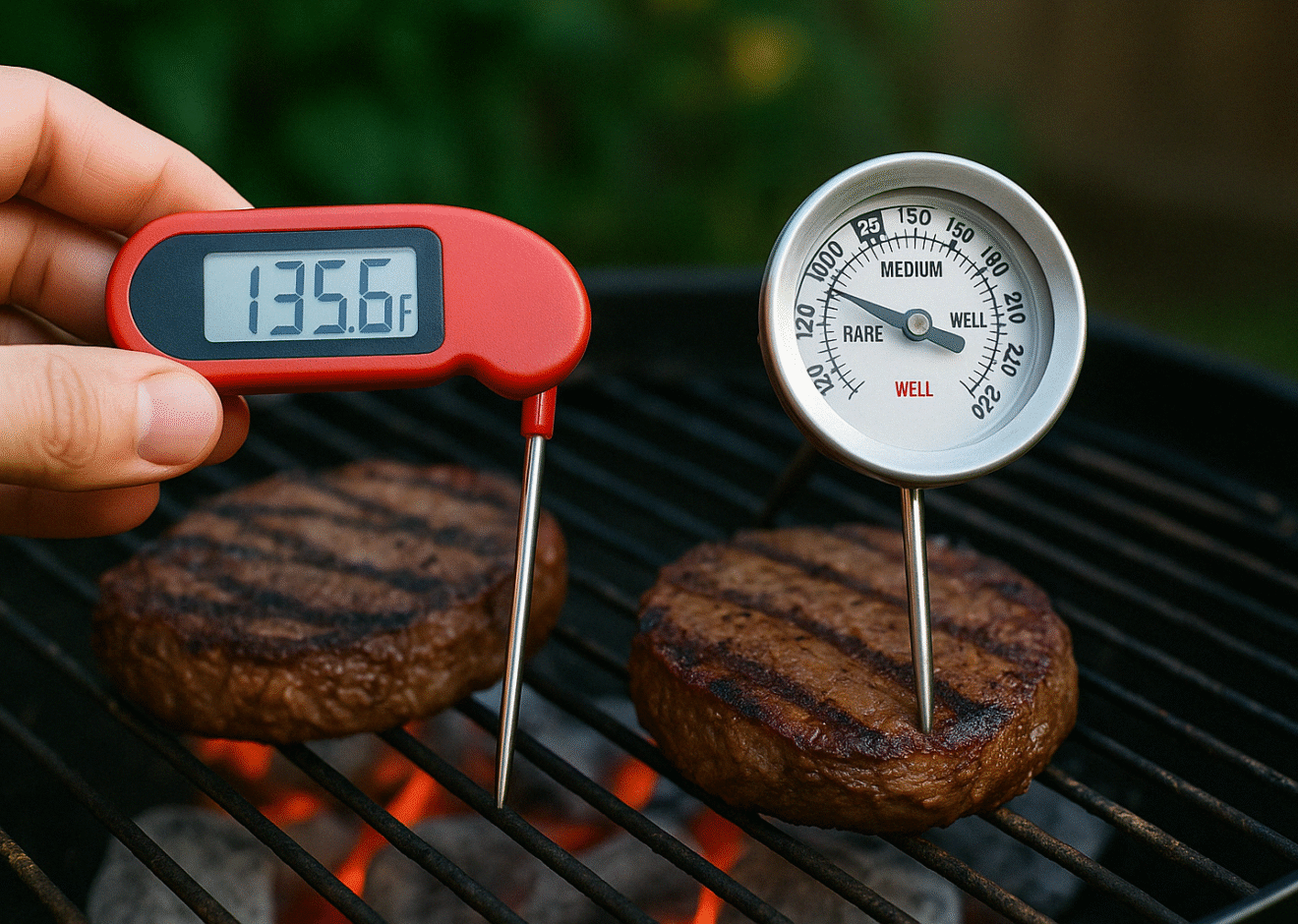
Don’t leave doneness to guesswork. Discover the key differences between digital and analog meat thermometers—and why accurate temps mean better BBQ every time.
Why Temperature Precision Is Everything in BBQ
Ask any seasoned pitmaster and they’ll tell you: the most important tool in BBQ isn’t the smoker or the sauce—it’s the thermometer. Cooking low and slow means nothing if your brisket is 10 degrees underdone or your chicken hits 175°F and dries out.
A good thermometer ensures your meat is safe, juicy, and flavorful. But not all thermometers are created equal. Let’s talk about the difference between digital and analog models, and why switching to digital might be the smartest upgrade you can make.
Analog Thermometers: Old-School, Still Useful (Sometimes)
You’ve seen these in oven doors or stuck into roasts. They’re basic, usually have a dial with temperature markings, and work through a metal probe that expands when heated.
Pros:
- No batteries required
- Can be left in meat while cooking
- Often budget-friendly
Cons:
- Slow to read temperatures (sometimes over a minute)
- Harder to read accurately, especially in low light
- Less precise (often +/- 5°F off)
Analog thermometers can still work for certain tasks, like checking ambient grill temps or slow-smoking large cuts, but they’re not ideal for fast-paced grilling or finicky meats like pork loin or fish.
Digital Thermometers: Modern BBQ’s Secret Weapon
Digital thermometers use electronic sensors to give you near-instant readings. Many are now instant-read or wireless, with accuracy down to 1°F.
Pros:
- Super fast—most give readings in 3–5 seconds
- Ultra-precise
- Easy-to-read displays (some even have backlights)
- Wireless options let you monitor temps remotely
Cons:
- Requires batteries
- Not all models are waterproof or grill-safe
When it comes to managing multiple cuts of meat, tracking smoker temps, or knowing exactly when to pull a steak at 130°F for medium rare, digital thermometers crush it.
Our Top Picks for Both Styles
Best Digital: ThermoPro TP19H Instant Read Digital Thermometer
It’s waterproof, has a rotating backlit display, magnetic backing, and reads temps in 2–3 seconds. A favorite among pros and backyard cooks alike.
Best Analog: Taylor Classic Leave-In Meat Thermometer
If you prefer a traditional style for oven roasting or grill-top use, this durable model is dependable and easy to calibrate.
Quick Tip: Calibrate Your Thermometer
Even the best thermometer can get knocked out of accuracy. To check calibration, place the probe in ice water (should read 32°F) or boiling water (should read 212°F at sea level). Adjust if needed or replace if wildly inaccurate.
Final Thoughts
When your BBQ game levels up, your gear should too. Swapping out that old-school dial thermometer for a fast, accurate digital model takes the guesswork out of grilling and lets you focus on flavor, not stress.
Don’t just hope your brisket is ready—know it.
